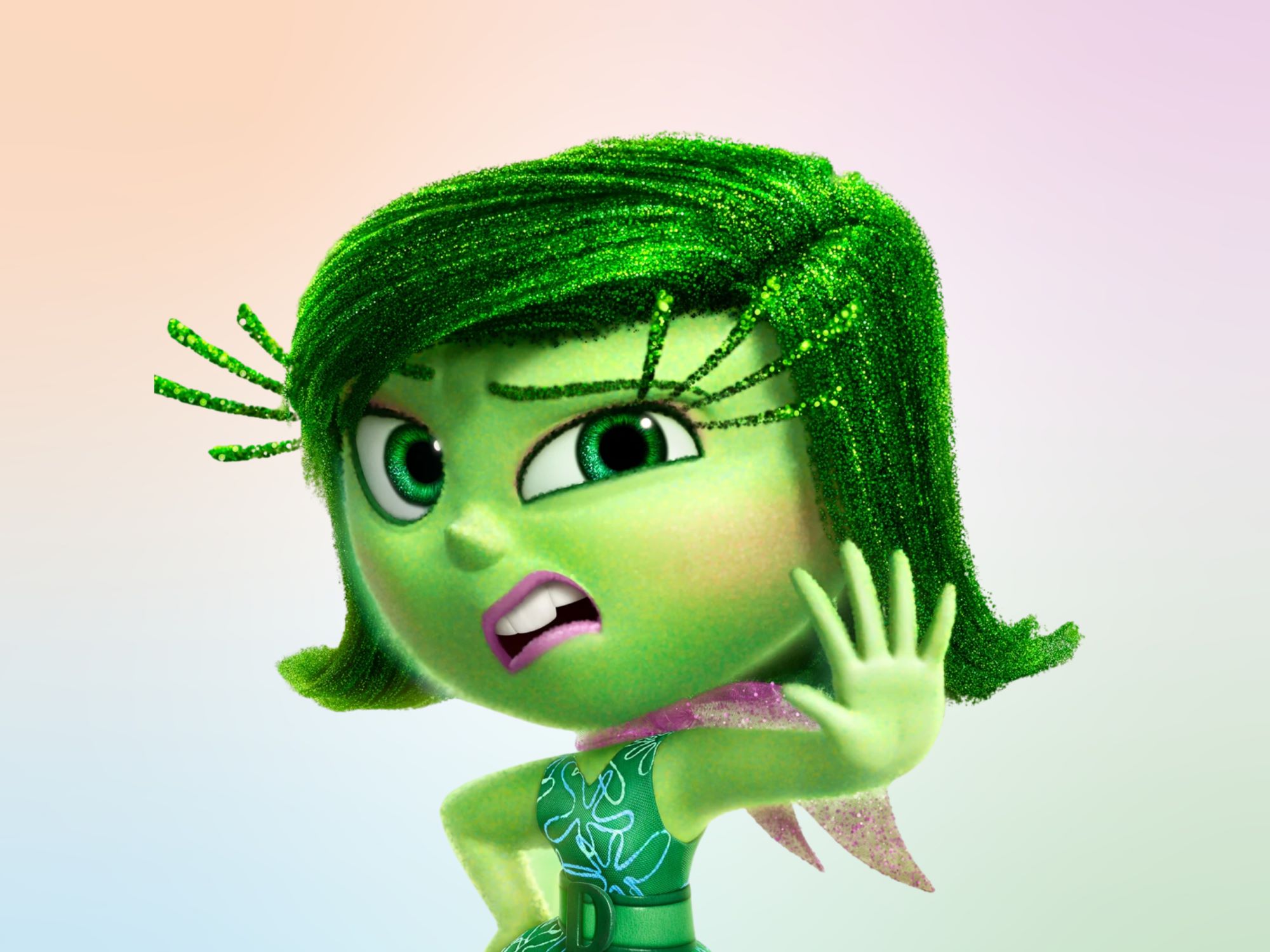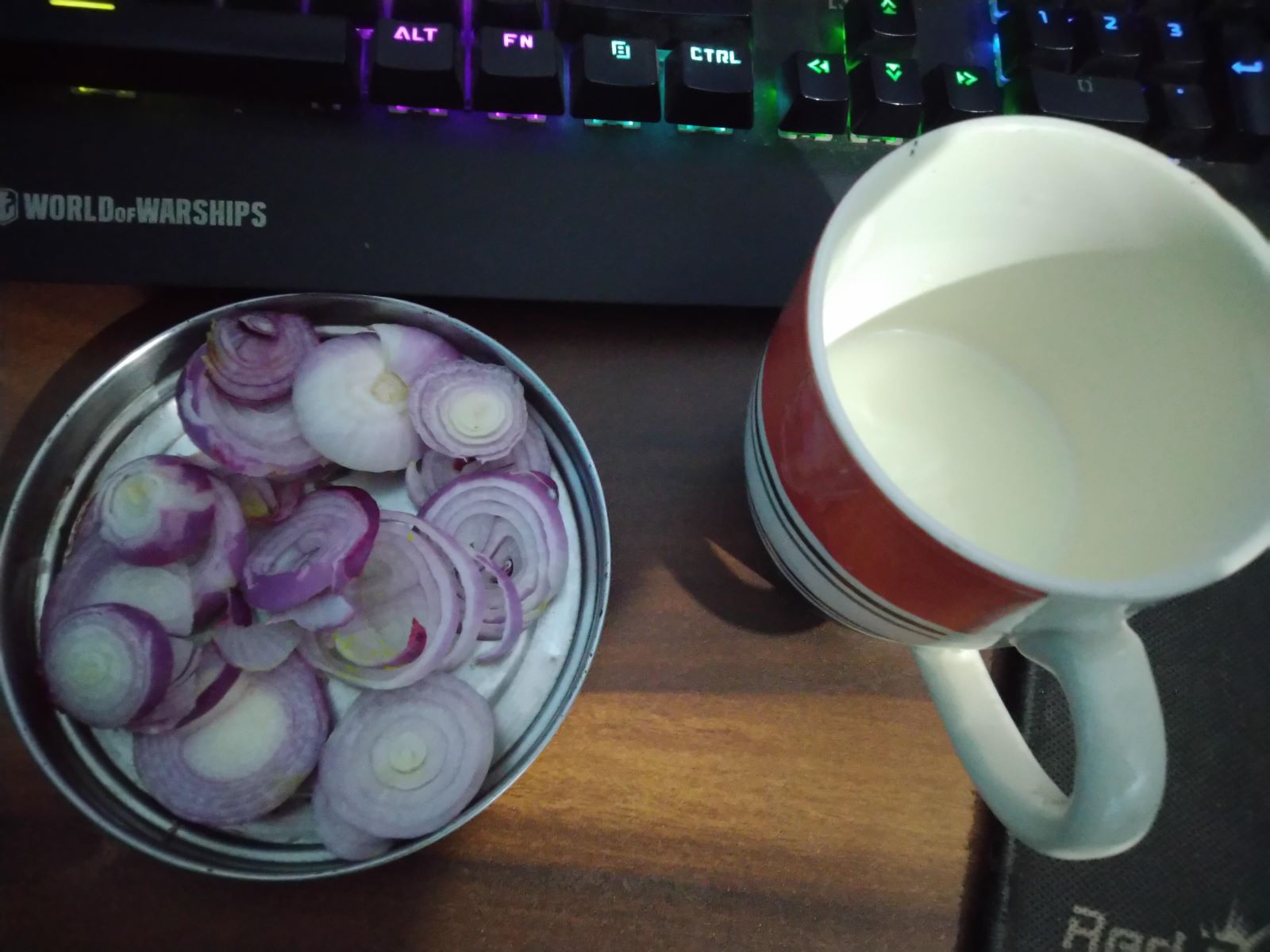Home>Psychology>The Surprising Reason Disgust Is Essential In Inside Out


Psychology
The Surprising Reason Disgust Is Essential In Inside Out
Published: January 4, 2024
Discover the surprising role of disgust in the human psyche with an insightful exploration of psychology in Inside Out. Uncover the essential connection between emotions and mental well-being.
(Many of the links in this article redirect to a specific reviewed product. Your purchase of these products through affiliate links helps to generate commission for Regretless.com, at no extra cost. Learn more)
Table of Contents
Introduction
In the enchanting world of Disney Pixar's "Inside Out," the character Disgust plays a crucial role in shaping the emotions and decisions of the protagonist, Riley. This seemingly negative emotion is often overlooked in its significance, but a deeper understanding reveals its essential role in human psychology and evolution. Disgust, one of the core emotions, is depicted as a stylish and discerning character in the movie, embodying the feeling of distaste towards certain experiences and situations. While it may seem counterintuitive to consider disgust as essential, its presence is a testament to the intricate nature of human emotions.
The character of Disgust in "Inside Out" provides a captivating entry point to explore the psychology behind this emotion and its impact on human behavior. By delving into the role of Disgust in the movie, we can unravel the complexities of this emotion and gain insights into its evolutionary purpose and its influence on decision-making processes. This article aims to shed light on the surprising significance of disgust in shaping our perceptions, reactions, and ultimately, our choices. Let's embark on a fascinating journey to uncover the multifaceted nature of disgust and its indispensable role in the human psyche.
The Role of Disgust in Inside Out
In the animated masterpiece "Inside Out," Disgust emerges as a prominent character representing the eponymous emotion. Voiced with sass and sophistication, Disgust embodies the aversion towards certain experiences and situations, adding a compelling layer to the emotional dynamics of the movie. As one of the five core emotions, alongside Joy, Sadness, Fear, and Anger, Disgust plays a pivotal role in shaping the protagonist, Riley's, responses and decisions.
Disgust's character design, with her stylish green ensemble and discerning attitude, reflects the essence of the emotion she represents. Her presence highlights the significance of this often underestimated emotion in influencing human behavior. Within the intricate control center of Riley's mind, Disgust's reactions to various environmental stimuli offer a lens through which viewers can comprehend the role of this emotion in shaping perceptions and responses.
Throughout the movie, Disgust's distinctive reactions to events such as trying new foods or navigating social interactions illustrate the nuanced ways in which this emotion influences Riley's experiences. Her role extends beyond mere aversion; it encompasses the preservation of Riley's well-being and the establishment of boundaries. This portrayal serves as a poignant reminder of the multifaceted nature of disgust and its impact on an individual's emotional landscape.
Furthermore, Disgust's interactions with other emotions, such as Joy and Anger, provide insight into the complexities of human emotional experiences. Her exchanges with Joy, characterized by witty banter and contrasting perspectives, underscore the interplay between positive and negative emotions. This dynamic interaction enhances the depth of the movie's emotional narrative, portraying the intricate balance of emotions within the human psyche.
In essence, the portrayal of Disgust in "Inside Out" serves as a compelling exploration of the role and significance of this emotion in shaping human experiences. By personifying disgust and intertwining her reactions with Riley's journey, the movie offers a thought-provoking depiction of the multifaceted nature of emotions, challenging viewers to contemplate the intricate interplay of positive and negative emotions in their own lives. Through Disgust's character, "Inside Out" invites audiences to recognize the profound impact of this often overlooked emotion and its relevance in understanding the complexities of human psychology.
This section of the article provides a glimpse into the captivating portrayal of Disgust in "Inside Out" and sets the stage for a deeper exploration of the evolutionary purpose and real-world implications of this essential emotion.
The Evolutionary Purpose of Disgust
Disgust, as depicted in "Inside Out," serves as a compelling entry point to delve into the evolutionary roots of this complex emotion. From an evolutionary perspective, disgust has played a crucial role in human survival and adaptation, serving as a protective mechanism against potential threats to health and well-being. This deeply ingrained emotion has its origins in the instinctual need to avoid harmful substances, environments, and social interactions, thereby contributing to the preservation of human life.
The evolutionary significance of disgust can be traced back to early human history, where the avoidance of potentially toxic or spoiled foods was essential for survival. Individuals who possessed a heightened sensitivity to the presence of harmful substances were more likely to thrive and pass on their genetic predisposition for disgust, thus perpetuating this adaptive trait within the human population. This evolutionary mechanism contributed to the development of a robust aversion to potentially harmful stimuli, safeguarding individuals from ingesting poisonous substances and minimizing the risk of illness or death.
Moreover, disgust extends beyond the realm of physical health and encompasses social interactions, hygiene practices, and environmental safety. In ancestral environments, the aversion to unsanitary conditions and potential sources of contamination played a pivotal role in reducing the spread of diseases and maintaining communal well-being. Individuals who exhibited a strong aversion to unsanitary conditions were more likely to avoid infectious agents, thereby contributing to the overall health and resilience of their communities.
Furthermore, the evolutionary underpinnings of disgust are intertwined with the development of moral and social norms. The aversion to morally repugnant behaviors or social taboos, such as dishonesty, betrayal, or unethical conduct, has been shaped by the evolutionary imperative to uphold cooperative and harmonious social structures. Disgust, in this context, serves as a powerful mechanism for reinforcing social cohesion and maintaining ethical standards within communities.
In the context of "Inside Out," the portrayal of Disgust as a discerning and vigilant character aligns with the evolutionary origins of this emotion as a protective mechanism. Through her reactions and discerning nature, Disgust embodies the innate aversion to potential threats, whether they manifest as physical hazards or social transgressions. By exploring the evolutionary purpose of disgust, we gain a deeper appreciation for its adaptive significance in human history and its enduring relevance in contemporary society.
This exploration of the evolutionary underpinnings of disgust elucidates its profound impact on human behavior and decision-making processes, underscoring its indispensable role in safeguarding individual and communal well-being. The evolutionary purpose of disgust, intricately woven into the fabric of human psychology, continues to shape our perceptions, interactions, and societal dynamics, underscoring its enduring significance in the human experience.
Disgust as a Protective Mechanism
Disgust, as depicted in "Inside Out," serves as a compelling entry point to delve into the evolutionary roots of this complex emotion. From an evolutionary perspective, disgust has played a crucial role in human survival and adaptation, serving as a protective mechanism against potential threats to health and well-being. This deeply ingrained emotion has its origins in the instinctual need to avoid harmful substances, environments, and social interactions, thereby contributing to the preservation of human life.
The evolutionary significance of disgust can be traced back to early human history, where the avoidance of potentially toxic or spoiled foods was essential for survival. Individuals who possessed a heightened sensitivity to the presence of harmful substances were more likely to thrive and pass on their genetic predisposition for disgust, thus perpetuating this adaptive trait within the human population. This evolutionary mechanism contributed to the development of a robust aversion to potentially harmful stimuli, safeguarding individuals from ingesting poisonous substances and minimizing the risk of illness or death.
Moreover, disgust extends beyond the realm of physical health and encompasses social interactions, hygiene practices, and environmental safety. In ancestral environments, the aversion to unsanitary conditions and potential sources of contamination played a pivotal role in reducing the spread of diseases and maintaining communal well-being. Individuals who exhibited a strong aversion to unsanitary conditions were more likely to avoid infectious agents, thereby contributing to the overall health and resilience of their communities.
Furthermore, the evolutionary underpinnings of disgust are intertwined with the development of moral and social norms. The aversion to morally repugnant behaviors or social taboos, such as dishonesty, betrayal, or unethical conduct, has been shaped by the evolutionary imperative to uphold cooperative and harmonious social structures. Disgust, in this context, serves as a powerful mechanism for reinforcing social cohesion and maintaining ethical standards within communities.
In the context of "Inside Out," the portrayal of Disgust as a discerning and vigilant character aligns with the evolutionary origins of this emotion as a protective mechanism. Through her reactions and discerning nature, Disgust embodies the innate aversion to potential threats, whether they manifest as physical hazards or social transgressions. By exploring the evolutionary purpose of disgust, we gain a deeper appreciation for its adaptive significance in human history and its enduring relevance in contemporary society.
This exploration of the evolutionary underpinnings of disgust elucidates its profound impact on human behavior and decision-making processes, underscoring its indispensable role in safeguarding individual and communal well-being. The evolutionary purpose of disgust, intricately woven into the fabric of human psychology, continues to shape our perceptions, interactions, and societal dynamics, underscoring its enduring significance in the human experience.
Disgust and Decision Making
In the intricate tapestry of human decision-making, the role of disgust extends far beyond its immediate emotional impact. Disgust, as portrayed in "Inside Out," serves as a compelling lens through which to explore the influence of this emotion on the cognitive processes that underpin decision making. The interplay between disgust and decision making is a fascinating area of psychological inquiry, shedding light on the intricate mechanisms that shape our choices and behaviors.
Disgust, with its innate aversion to potential threats and harmful stimuli, exerts a profound influence on decision-making processes. When individuals encounter situations or choices that evoke feelings of disgust, their cognitive appraisal is significantly influenced, leading to a heightened sense of caution and aversion. This emotional response can manifest in various contexts, ranging from food selection and consumption to social interactions and risk assessment.
In the realm of food choices, disgust plays a pivotal role in guiding individuals away from potentially contaminated or spoiled items. The visceral reaction to unpleasant odors, textures, or appearances serves as a protective mechanism, steering individuals away from consuming substances that may pose a risk to their health. This instinctual aversion, rooted in the evolutionary history of disgust, highlights its adaptive significance in safeguarding individuals from potential harm.
Moreover, disgust influences social and interpersonal decision making, shaping perceptions of trust, integrity, and ethical behavior. Individuals may experience feelings of disgust in response to dishonesty, betrayal, or morally reprehensible actions, leading to a pronounced aversion towards individuals or situations that evoke such emotions. This emotional response serves as a guiding force in navigating social relationships and ethical dilemmas, contributing to the maintenance of interpersonal boundaries and moral integrity.
Furthermore, the interplay between disgust and decision making extends to risk assessment and avoidance behaviors. Situations or stimuli that elicit feelings of disgust can prompt individuals to avoid or minimize exposure to potential threats, contributing to the preservation of their well-being. This heightened sensitivity to disgust-inducing stimuli underscores its role in shaping risk perception and guiding adaptive behaviors in various contexts.
In essence, the influence of disgust on decision making transcends mere emotional reactivity, encompassing a nuanced interplay between cognitive appraisal, risk assessment, and ethical considerations. By examining the intricate relationship between disgust and decision making, we gain a deeper understanding of the multifaceted ways in which emotions shape our choices and behaviors, underscoring the pervasive impact of disgust on the human decision-making process.
Conclusion
The captivating portrayal of Disgust in Disney Pixar's "Inside Out" offers a compelling lens through which to explore the intricate nature of this often overlooked emotion. The character of Disgust, with her discerning demeanor and aversion to various stimuli, provides a thought-provoking representation of the multifaceted role of disgust in shaping human experiences. By delving into the evolutionary roots and real-world implications of this essential emotion, we gain profound insights into its enduring significance in human psychology and decision-making processes.
From an evolutionary perspective, disgust has served as a protective mechanism, guiding individuals away from potential threats to health and well-being. The innate aversion to harmful substances, unsanitary conditions, and morally repugnant behaviors reflects the adaptive significance of disgust in safeguarding human life and communal well-being. This evolutionary imperative has left an indelible mark on the human psyche, shaping our perceptions, interactions, and ethical considerations.
Moreover, the influence of disgust on decision making transcends mere emotional reactivity, encompassing a nuanced interplay between cognitive appraisal, risk assessment, and ethical considerations. The aversion to disgust-inducing stimuli guides individuals in navigating food choices, social interactions, and ethical dilemmas, highlighting the pervasive impact of disgust on the human decision-making process.
By unraveling the complexities of disgust through the lens of "Inside Out," we are reminded of the intricate interplay of emotions within the human psyche. Disgust, often overshadowed by its more celebrated counterparts, serves as a poignant reminder of the profound and multifaceted nature of human emotions. Its presence in the emotional landscape of individuals underscores its enduring relevance in understanding human behavior and the complexities of decision making.
In conclusion, the character of Disgust in "Inside Out" serves as a compelling catalyst for exploring the surprising significance of this essential emotion. Through its portrayal, viewers are invited to contemplate the intricate interplay of positive and negative emotions, gaining a deeper appreciation for the profound impact of disgust on human experiences. As we navigate the rich tapestry of emotions in our own lives, the character of Disgust stands as a testament to the intricate and indispensable role of this often underestimated emotion in shaping our perceptions, decisions, and ultimately, our humanity.














